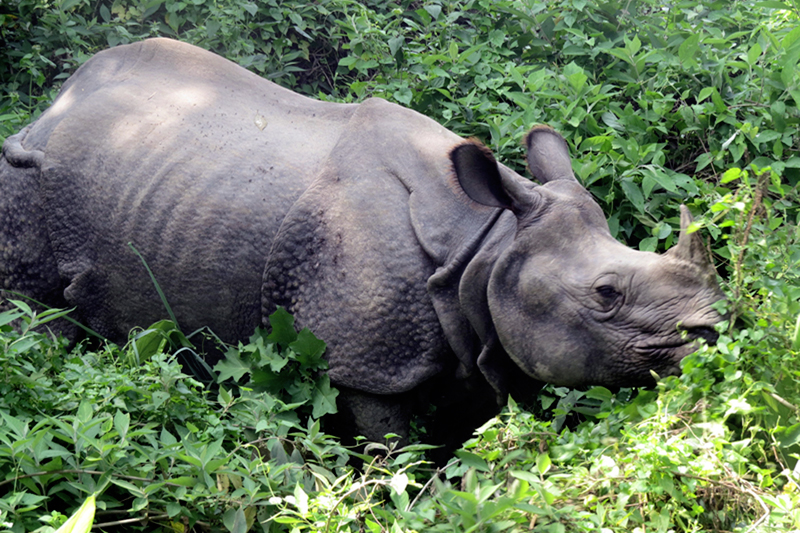One rhino dies every eight days in Chitwan National Park
Kathmandu, June 23
On average one endangered one-horned rhinoceros dies every eight days in Chitwan National Park, which has prompted authorities to conduct a comprehensive study on whether Nepal’s first national park is becoming densely populated with the animal.

Chitwan National Park, a World Heritage Site, reported deaths of 40 rhinos in the first 11 months of the current fiscal year from mid-July to mid-June, according to the latest data of the Department of National Parks and Wildlife Conservation. Deaths recorded in the national park account for almost 89 per cent of deaths of rhinos across the country. Nepal reported deaths of 45 rhinos across the country in the 11-month period, up 50 per cent from the whole of the last fiscal year when 30 one-horned rhinos had died.
Most rhino deaths occur in Chitwan National Park because it is the largest natural habitat for the endangered animal in Nepal.
Around a decade ago, one of the major causes of rhino deaths was poaching. That came to an end a few years ago after authorities stepped up action against poachers. Today, Chitwan National Park is a ‘zero poaching’ zone. Yet more and more rhinos are dying every year because of natural causes and not because of their age, said DoWCNP Deputy Director General Ram Chandra Kandel.
The average lifespan of rhinos is 25 to 30 years in the wild. But most of the rhinos that die in Nepal are below 20.
“We’ll soon conduct a study on carrying capacity of Chitwan National Park to find out reasons for high number of rhino deaths,” Kandel said. The study will be carried out in partnership with IUCN Asian Rhino Specialist Group, a group of rhino experts in Asia.
The study will conclude the number of animals that the national park can house based on the food chain, available resources and habitability in the area. Researches show that around 10 rhinos can live in an area of 10 sq km if there is plenty of water and grass suitable for them. Chitwan National Park spreads over 932 sq km with an additional 750 sq km of buffer zone and is home to around 605 rhinos.
“Experts from different countries will join our research scheduled to begin next week,” said Kandel.
The research will focus on various aspects of the national park like availability and condition of food resources and the condition of wet lands and water resources. It will also try to find an answer to whether climate change is making it difficult for rhinos to adapt to the environment. Also, studies on the outbreak of unknown diseases and contamination of water will be conducted.
“We have also noticed many rhinos being washed away during monsoon when rivers swell. The study will recommend ways to reduce the death of rhinos from natural disasters,” said Kandel.
Despite the increase in death of rhinos, the population of the endangered animal in Chitwan National Park has not come down, as 50 baby rhinos are being born every year, according to park officials.
A female rhino can give birth to four to five calves in her lifespan.
A female rhino starts bearing offspring from the age of four, whereas male rhinos reach reproductive age at five.
The country had recorded 800 rhinos in the year 1950 during the first census. After that, the number declined rapidly due to poaching, with Nepal reporting the presence of only 100 rhinos in 1972. Nepal had 645 rhinos across the country in 2015. Rhinoceros are also being conserved in three other national parks as well.






